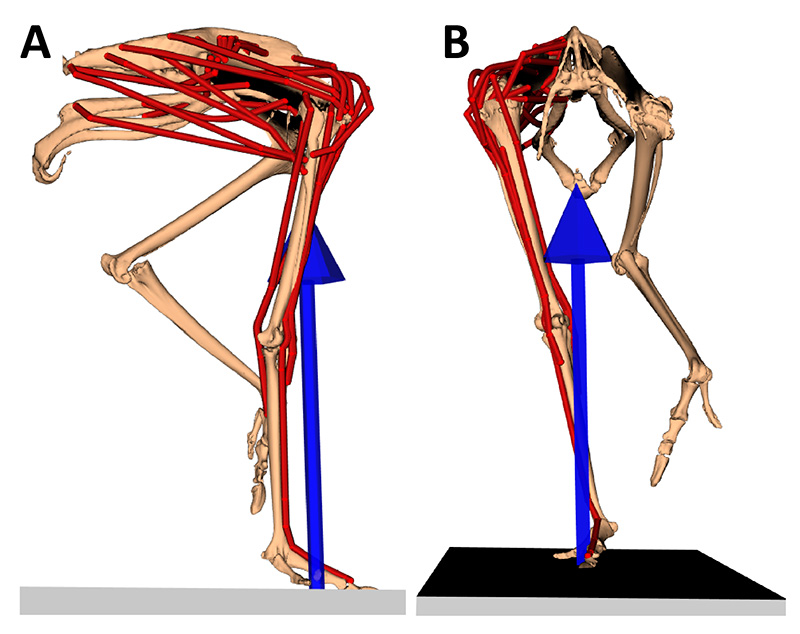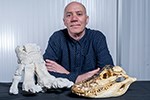RVC study uses computer optimization to show ostrich gait in detail never seen before
A new study shows for the first time the detailed mechanics of how ostriches use their leg muscles to drive their motions.
The study, which has been published in the Journal of the Royal Society Interface, focused on the mechanics and the muscles used by ostriches, the world’s fastest two-legged animal, as they walk and run.
The study, led by °ÄĂĹÁůşĎ˛ĘąćÂÉÂŰĚł (RVC) scientists Dr Jeffery Rankin, Postdoctoral Research Fellow in Biomechanical Modelling and Simulation, and Professor John Hutchinson, Professor of Evolutionary Biomechanics, combined existing gait data with a newly developed computer model of the detailed anatomy of ostrich legs to generate simulations of ostriches walking and running which predict muscle movements, forces and mechanical work. They worked in collaboration with Dr. Jonas Rubenson of Penn State University (USA).

The study’s application of cutting edge computer simulations showed that individual muscles tended to be excited primarily either when the foot was on or off the ground, rather than some more complex pattern of excitation. This finding is consistent with previous experimental studies that recorded the level of electrical activity of muscle tissue in other birds. However, the knee joints acted as brakes, absorbing energy, even though work and force estimates show that ostrich gaits are partially hip-driven with the bi-articular hip-to-knee muscles driving the ostrich forward while a foot is on the ground.
The toe flexor tendons generated large amounts of energy both to slow down and speed up the ostrich, with increased magnitudes during running, providing further evidence that ostriches make extensive use of tendinous elastic energy storage to improve their economy.
Commenting on the study, Professor John Hutchinson said: “This study allowed us to estimate in great detail, in ways we never could measure experimentally for the entire limb musculature, how ostriches control their walking and running motions. It’s very satisfying that the results from the computer optimizations match other results from experimental studies of smaller bird species. Our simulations also highlight the need to carefully consider non-muscular soft tissues that may play a role in ostrich gait.”
Press Office Contact
Uche Graves / Zoe White
T: 0800 368 9520
E: uche.graves@plmr.co.uk / zoe.white@plmr.co.uk
Notes to Editors
The °ÄĂĹÁůşĎ˛ĘąćÂÉÂŰĚł (RVC) is the UK's largest and longest established independent veterinary school and is a constituent College of the University of London. The RVC offers undergraduate, postgraduate and CPD programmes in veterinary medicine, veterinary nursing and biological sciences, being ranked in the top 10 universities nationally for biosciences degrees. It is currently the only veterinary school in the world to hold full accreditation from AVMA, EAEVE, RCVS and AVBC.
A research-led institution, in the most recent Research Excellence Framework (REF2014) the RVC maintained its position as the top HEFCE funded veterinary focused research institution.
The RVC also provides animal owners and the veterinary profession with access to expert veterinary care and advice through its teaching hospitals; the Beaumont Sainsbury Animal Hospital in central London, the Queen Mother Hospital for Animals (Europe's largest small animal referral centre), the Equine Referral Hospital, and the Farm Animal Clinical Centre located at the Hertfordshire campus.
RVC Press Release 4 May 2016
See other .
You may also be interested in:
-
RVC’s Professor John Hutchinson elected Fellow of prestigious Royal Society
John Hutchinson, Professor of Evolutionary Biomechanics at the °ÄĂĹÁůşĎ˛ĘąćÂÉÂŰĚł (RVC), has …

